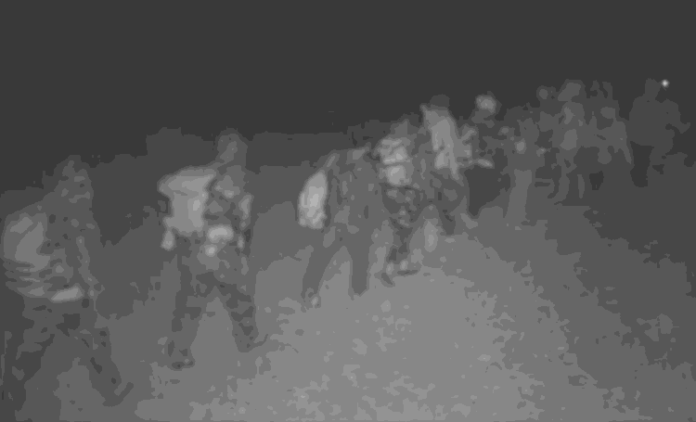New Border Patrol Chief Jason Owens says the influx of record numbers of people at the southern border “isn’t sustainable.”
The influx takes Border Patrol agents away from their primary job of securing the border. While they are tasked with processing illegal foreign nationals into the country, cartels exploit open access into the U.S., he and others say.
With 10,000 people surging the border within a few days and overwhelming Border Patrol agents and local authorities in the Eagle Pass and El Paso regions of Texas, and a record number of illegal entries reported in August, Owens said what’s happening isn’t a coincidence.
In a recent ABC News interview, he explained thousands of people surging the border at once “is a money-making opportunity for smugglers and a distraction to bring other things into the country.”
“Other things” includes narcotics, bulk cash, weapons, people of interest, hardened criminals, gang members, convicted sexual predators, among others, he said.
Former Border Patrol Chief Mark Morgan also points to the same tactic used by cartels. The tactic is used to pull Border Patrol agents away from specific areas along the border to evade detection and capture. Pulling Border Patrol agents away from their “statutory mission that [involves a lot of]sacrifice every day to protect us, to stop a vast set of complex threats from coming in, jeopardizing our national security,” Morgan has explained.
“They’re not on the front lines; they’re not doing their law enforcement mission to protect our nation. They’re not there. It leaves our borders completely wide open, completely vulnerable. We’ve literally handed over operational control to the cartels. With no agents on the line, the cartels exploit this every day.”
Tucson Sector Border Patrol Chief John Modlin testified before Congress about the tactic.
“In Tucson, the vast majority of encounters are single adult males attempting to avoid detection. The smuggling organizations to our south are very well organized and resourceful,” Modlin said, referring to Mexican cartels. “Each and every person crossing through the Tucson Sector must pay these criminal organizations,” which “employ various tactics to move thousands of migrants illegally across the border,” including “task saturation.”
Task saturation, he explained, “is a term we use to describe a tactic where smuggling organizations split large groups of migrants into many smaller groups. These small groups are then directed to illegally cross the border all at once at different locations, effectively saturating the area with migrants and exhausting our response capability. This tactic, coupled with the remoteness of the area, has a compounding effect and results in large areas of the border being left vulnerable while our agents are responding, rescuing and apprehending migrants.”
Despite Border Patrol agents being taken off the line, agents have seized more than 69,000 pounds of narcotics between ports of entry this fiscal year, which comes to a close Sept. 30, Owens says. They’ve also apprehended 151 known, suspected terrorists (KSTs) fiscal year to date between ports of entry at the southwest border alone, up from 98 in the previous fiscal year, according to the most recent CBP data.
The biggest unknown, perhaps, law enforcement officials have explained, is how many criminals and potential KSTs have illegally entered the U.S. as gotaways, foreign nationals who illegally enter the U.S. between ports of entry and don’t return to Mexico.
They don’t file asylum or other immigration-related claims – they intentionally illegally enter to avoid being caught. Many have criminal records. They often run when they are pursued by Border Patrol agents or others in law enforcement, authorities tell The Center Square. The majority of gotaways are single, military age men.
Border Patrol agents, law enforcement officers, and Homeland Security – the agency tasked with defending the homeland – have no idea how many came through who weren’t reported. They have no idea who or where they are.
They now total at least over 1.6. million since January 2021, The Center Square has reported, greater than the individual populations of 11 states.
Republished with the permission of The Center Square.














